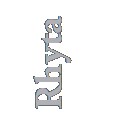








The period from winter when the rains arrived to spring when the sun and life returned was especially important for the livelihood of the ancient ones. Leo, Taurus, Aries, and the constellation Hercules (stag constellation, near Cassiopeia) represented this period, and the combination of these stars symbolized abundant harvests, fertility, revival, and regeneration.





Combinations of animals such as the one here, in which a lion attacks a bull or some other hoofed mammal, developed into “motifs of combat.” In time, as city-states begin to form, lions come to symbolize powerful kings, and the seasonal significance placed in the motif of combat.